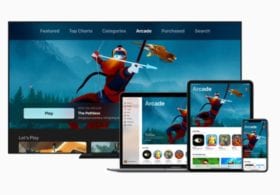 A changing pay-TV environment requires proactive thinking and creative strategies. Patrick Rivet, CEO for THEMA America, a Canal+ Group, offers insights on how to address challenges facing today’s programmers.
A changing pay-TV environment requires proactive thinking and creative strategies. Patrick Rivet, CEO for THEMA America, a Canal+ Group, offers insights on how to address challenges facing today’s programmers.
How do programming preferences/genres differ by culture/country?
At THEMA, we work to create a successful multicultural pay-TV package with programs and genres attractive to a specific culture or country, but I think it is essential to look first into the emerging consumer preferences at a global level. Our thematic channel offerings are the result of a study of each audience’s habits and segment watching preferences. We are designing the channels according to the habits of the Hispanic audience of the US and Latin America and our special-interest channels include premium content, and genres such as sports, music, lifestyle, news, health, and wellness. Thema America is a Canal+ Group with years of experience and a portfolio of over 180 channels worldwide.
A good example is Kanal D Drama, launched in LatAm last year. We decided to offer this channel based on the habits of the Hispanic audiences in the U.S. and Latin America. These are both faithful audiences that love to watch soap operas, but are tired of Hollywood’s clichés and stereotypes. Now, the Turkish series are a big hit in the region, and starting in November 1st, Kanal D Drama will be available to Hispanic audiences in the U.S. through Comcast’s Xfinity Latino TV.
Another good example of programming preference is CincoMAS, which is the international channel of Mediaset Spain. This channel has been designed specially for Spanish-speaking viewers in all the American continent. The channel was launched in 2016 and is directed to a public of 16 years +, without advertising. CincoMAS offers large international formats, successful series and miniseries, factuals of adventures, news magazines, and live daily news.
How do the opportunities offered by digital distribution differ for different audiences?
In this changing pay-TV environment, our offering needs to be flexible, user-friendly packages with a diverse range of options that appeal to different audiences, including cord-cutters and younger generations. At Thema we work hard to make our offering more attractive for regional diasporas, such as the French-speaking community, the Hispanic market in the U.S., and Latin America. We’re constantly looking to provide services that complement the basic TV viewing experience with social networks, interactive content, and additional features, either integrated on screen or on companion devices.
The industry now has more options for serving Hispanic and other regional diasporas in the U.S., with millions of viewers who want more video content choices, the option to choose their language, and options for when and where to access video. All of these digital distribution options are part of the natural evolution of this industry, and are now at the intersection of Broadcast, Cable, and Digital OTT platforms.
What are the biggest challenges for programmers regarding linear TV?
The biggest challenge right now for programmers is to be proactive and quick to adapt to the changing TV landscape. Linear TV programmers will have to evolve a wider range of pricing and packaging options to ensure that their offers stay relevant, particularly to younger audiences. Therefore, service providers will have to experiment with packages that cater to the unique needs and behaviors of the so-called digital generations. Most definitely, re-inventing pay-TV for the next generation of younger customers will be a key priority in 2020.






